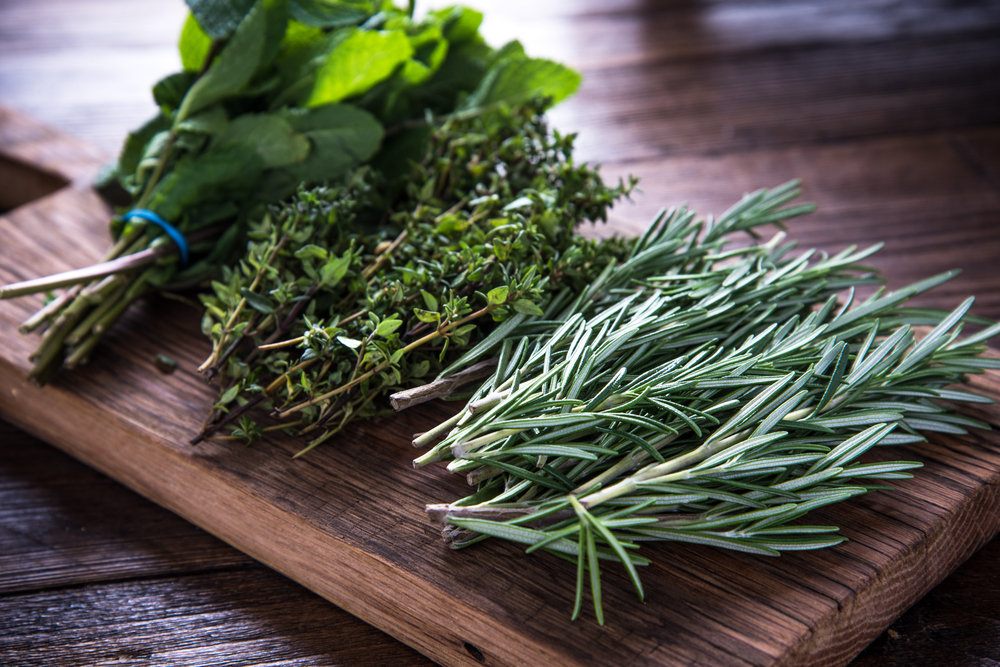Herbs are always the leaves of plants. Many herb plants are “herbaceous” (non-woody), and the stems are tender and flavorful, but some herbs have tough woody stems. We mostly use herbs for savory purposes in cooking, and when compared to spices, we tend to use them in larger quantities. Examples of herbs include rosemary, oregano, sage, thyme, basil, parsley, cilantro, mint, and dill.
Check out our Seven Ways with Herbs Guide for some ideas on using a few of these herbs in your kitchen,
Spices are different parts of plants; they can be either roots/rhizomes, flowers, fruits, seeds, or bark. They tend to be more potent, so we tend to use them in relatively smaller quantities. However, this always varies by recipe and by cuisine. Examples of spices include peppercorns (fruit/seed), paprika (fruit), cinnamon (bark), cumin, coriander and nutmeg (seeds), clove (flower bud), and ginger and turmeric (rhizomes).
Check out our Seven Ways with Spices Guide for some ideas on using a few of these spices in your kitchen,

Since herbs enhance flavor, you will be able to depend less on salt and add less salt to your recipes.
When do you add herbs and spices? It depends on the kind of herb or spice you are dealing with and the cooking time the recipe calls for.
Ground spices have a more concentrated flavor than whole spices, and they will infuse sauces with flavor quicker than whole spices.
The Flavor Bible
Healing Spices
Choosing the right health and well-being coaching program is a deeply personal decision—especially when it’s tied to one’s journey of healing and growth. As a cancer survivor and now a health and wellness coach supporting cancer patients, Ed Jones wanted the best training to serve his clients with expertise and ...
READ MOREIn the rush of deadlines and meetings, kindness can often be overlooked. However, research shows that workplace kindness is crucial for employee well-being. Regular acts of kindness enhance morale, reduce stress, and foster collaboration and productivity. Here are five ways kindness can improve well-being at work.

Art can support healthcare providers by boosting their skills and emotional awareness. Engaging in art enhances observation and empathy, key qualities for patient care. Here are three ways making art fosters a more compassionate approach to healing.
